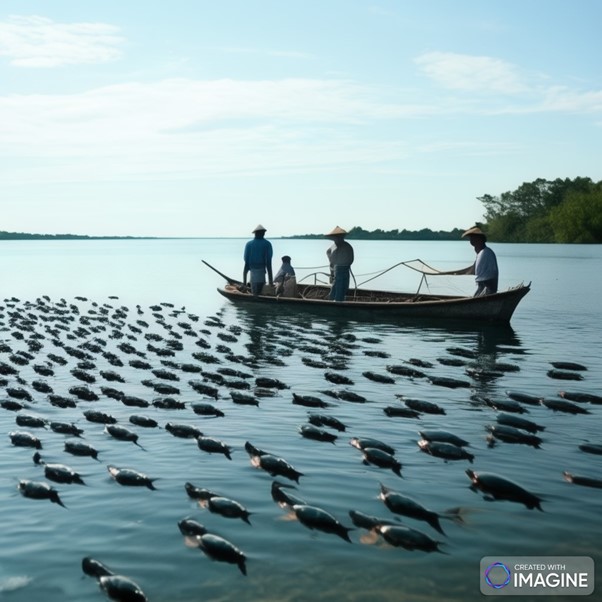By: Purabi Sarkar, V. Stefi Raj and Aziz Arshad
Article Prepared By: Farah Izana Abdullah
Disease in fish farming causes the most important economic losses, especially fungal infections, which are second most serious cause of loss in aquaculture. In temperate fish aquaculture, fungal spores easily spread through water, colonise and cause infection. Diseased or fishes in stressed conditions are more susceptible to fungal diseases than the healthy fish population as well as poor water quality. Fungal are thought to be secondary invaders that result from physical damage caused by rough handling or invasion of primary pathogens. Over-crowding, low water quality, insufficient diet and physical stress can incapacitate the immune system of fish. However, they don't really kill the fish but instead trigger pathogenic fungal outbreaks.
Pathogenic fungi such as Achlya spp., Aphanomyces spp., Aspergillus spp., Saprolegnia spp., Branchiomyces spp., Ichthyophonus spp. and Fusarium spp. are found to infect various aquatic organisms such as, salmonids, rainbow trout, giant gourami, murrels, catfishes, Mastaceamblus armatus, Pentius sophore, tilapia, and eels, causing epidermal lesions and can lead to systemic diseases. Often, the spores attach to the surface of the host and germinate to form ameloblasts in the digestive tract. In some cases, the germinated spores penetrate through the blood vessel system, affecting multiple organs.The example of pathogenic fungal virulence factors affecting aquatic organisms are Fugal binding protein, Fungal glycosyl hydrolase, Protease, Kinases and kinase inhibitor.
Many studies have been performed to cure infections rather than prevent them in the first place. The understanding of the biology of microbial pathogens and their virulence factors at the molecular level is critical for the discovery of novel therapeutic molecules and techniques to suppress microbial infections. Fungal infection, virulence, and pathogenicity are the major aspects to understanding the actual mechanism of host- pathogenic interactions and the development of vaccines.
Web: https://doi.org/10.1016/j.aquaculture.2021.737553
Date of Input: 30/01/2023 | Updated: 30/01/2023 | m_fakhrulddin
MEDIA SHARING




























